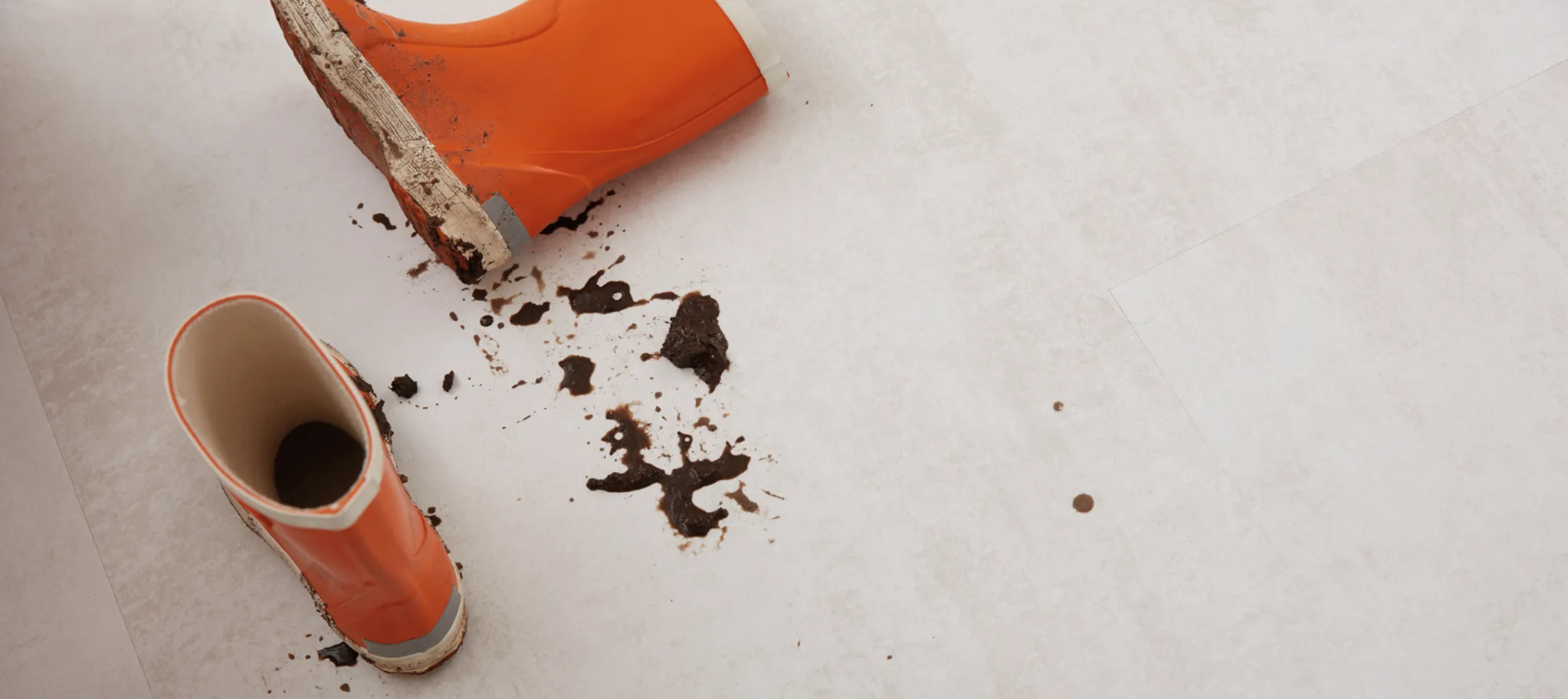-
When is a screed ready for laying?
The screed must be levelled, load-bearing and permanently dry. The maximum height tolerance according to DIN 18202 of 3 mm per linear meter must not be exceeded. The residual moisture value may not exceed 2.0 CM% for cement screed and 0.5 CM% for anhydride screed. For underfloor heating, the value for cement screed is reduced to 1.8 CM% and for anhydride screed to 0.3 CM%
-
What is a DPL laminate flooring?
DPL stands for "direct-pressed laminates" and means that the carrier plate (HDF) is melted together under high pressure and heat in a single operation with the overlay, the decorative layer and the counter-pull. The overlay forms the uppermost protection layer and, thanks to the press plate used, is individually tailored to the structure of the decor. The decorative paper gives the floor its appearance. The carrier plate serves for stability and is carrier of the profiles. The counterpart serves the dimensional stability of the individual elements.
-
Why must a vapor barrier be used?
For ready-to-lay mineral substrates such as screed or concrete under unfavorable climatic conditions Moisture can rise and cause swelling in the joint area. A vapor barrier protects the carrier plate against rising damp from the underground. The vapor barrier, usually a 0,2 mm polyethylene film, is placed below the impact sound insulation on the subsurface, overlapped by 20 cm and pulled upwards on the walls.
-
Can you put laminate flooring on a underfloor heating?
Laminate flooring (7-8 mm) is characterized by a favorable heat transfer resistance of ≤ 0.06 (m²K) W and allows economical operation of a hot water underfloor heating. The insulation backing must be tailored to the system, the heat transfer resistance should not exceed 0.02 (m²K) W. The surface temperature of the laid laminate floor must not exceed 27 ° C permanently. Electric underfloor heating must be adjustable and slowly raise and lower temperature like a hot water underfloor heating system, the surface temperature should not exceed the 27 ° C here as well.
-
Is there a prescribed laying direction for a laminate floor?
There is no compulsory laying direction, however, it can influence the optical size ratio of a room image, therefore, we recommend the laying direction to the light.
-
Must there be used an underlay mat?
An underlay mat forms the interfaces to the underground and takes over important functions, like the compensation of punctual bumps. They protect the entire system in daily use and and can protect against rising damp, as well as reduce walking and footstep noise.
-
Is there any harm with laminate formaldehyde emissions?
Laminate floors have a wood-based material as a carrier and contain like any natural wood product formaldehyde. The possible emission quantity for laminat floors is 0.03 ppm. This value is below the legal limit E1 of 0.1 ppm and also falls below the requirements of 0.05 ppm of the Blue Angel and is practically considered "pollutant-free".

(Blauer Engel)
-
What does a laminate floor consist of?
A laminate floor has a high-density fibreboard as a carrier and consists of about 90% wood fibers, which are glued with an environmentally friendly glue resin about 10% and highly compressed. The decor side exists "of 2-3 layers of functional papers impregnated with a melamine resin. To the dimensional stability of the panels there is a counterpart paper applied on the back ."
-
Is a laminate floor suitable for allergy sufferers?
Laminate flooring is manufactured without pesticides, organochlorine compounds and harmful heavy metals. Due to the melamine resin overlay, the surface is closed and provides house dust mites and microorganisms only a small breeding ground. A laminate floor is due to the closed surface and its good cleaning and care properties suitable for allergy sufferers.

